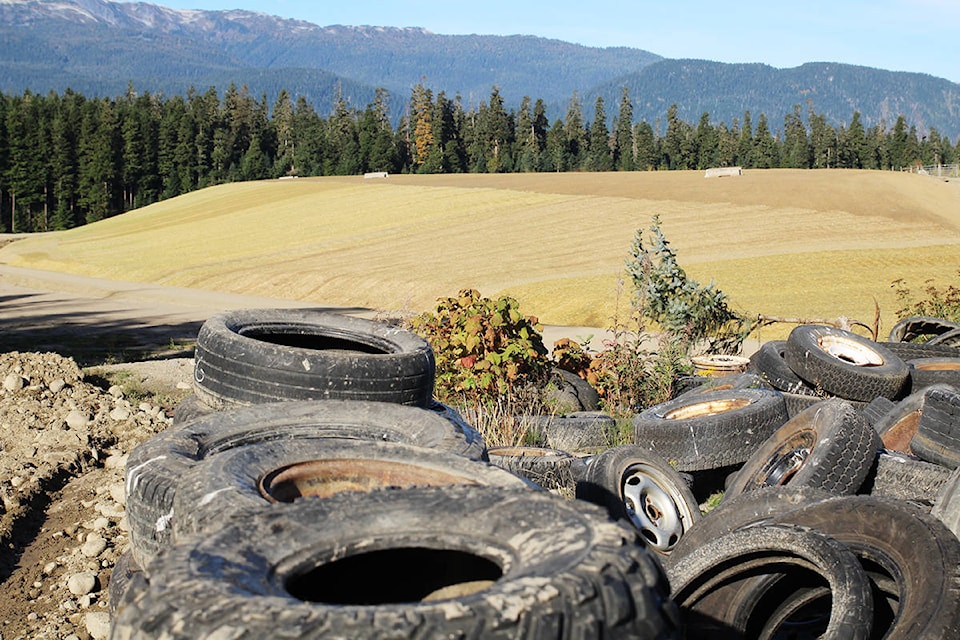Contractors hired by the District of Kitimat have completed a $2 million capping of a section of Kitimat’s landfill.
“The district completed the permanent closure of a section of the municipal landfill which had reached its final design elevation,” said DoK Engineering Services director Alex Ramos-Espinoza.“The B.C. Ministry of Environment’s landfill criteria for municipal solid waste requires that landfill areas that no longer receive additional filling activity be permanently closed.”
Ramos said the closure and capping of a landfill must satisfy a number of criteria, including the contouring of the surface to meet maximum and minimum slopes, the installation of membranes to direct any landfill gas generated to release points, a geosynthetic waterproof barrier and a drainage and protection layer topped with an organic growing layer.
“The purpose of the work is to eliminate the permeation of rainfall through the refuse to minimize any potential leaching of contaminants from the site.”
The landfill is operated under permit through the Ministry of Environment and an approved Design, Operation and Closure Plan. The plan determines how the landfill will evolve and allows for phased growth and closures to minimize environmental impact.
“Future closures will occur as active landfill areas meet their final design elevations,” added Ramos-Espinoza.
The DoK selected environmental engineering firm AECOM Canada to provide the design and contract management for the project. C & C Road Maintenance Ltd. was the successful bidder to carry out the capping.
The ministry estimates that organic waste represents up to 40 per cent of all waste that is sent for disposal. The volume of organic waste is increasing with B.C.’s population growth.
“Keeping organic materials out of the landfill prolongs landfill life and reduces the production of greenhouse gases, particularly methane,” said the ministry in a statement.
Organic waste generally refers to biodegradable, compostable waste from homes, businesses, institutions, and industrial sources. Examples include food scraps, yard and garden trimmings, food-soiled paper products and even biosolids (treated sewage sludge that can be used as soil conditioner in agriculture).
Food waste refers to food that is intended for human consumption that is discarded without ever being eaten. The United Nations’ Food and Agricultural Organization estimates that a third of all food grown for human consumption ends up being wasted.
Waste that ends up in landfills is controlled through the Organic Matter Recycling Regulation of B.C (OMRR). The regulation is currently undergoing a comprehensive review and was up for public comment.
The period for contributions to the review ended this week and the responses will be considered in preparing the proposed revisions to the regulation.
It is hoped that the proposed changes to the regulation will increase support for the processing of organic waste, which will reduce the burden on landfills.
The provincial government continues to work toward a target of 75 per cent of B.C.’s population being covered by organic waste disposal restrictions by 2020, as well as a per-capita municipal solid-waste disposal reduction target of 350 kilograms per person by 2020.
